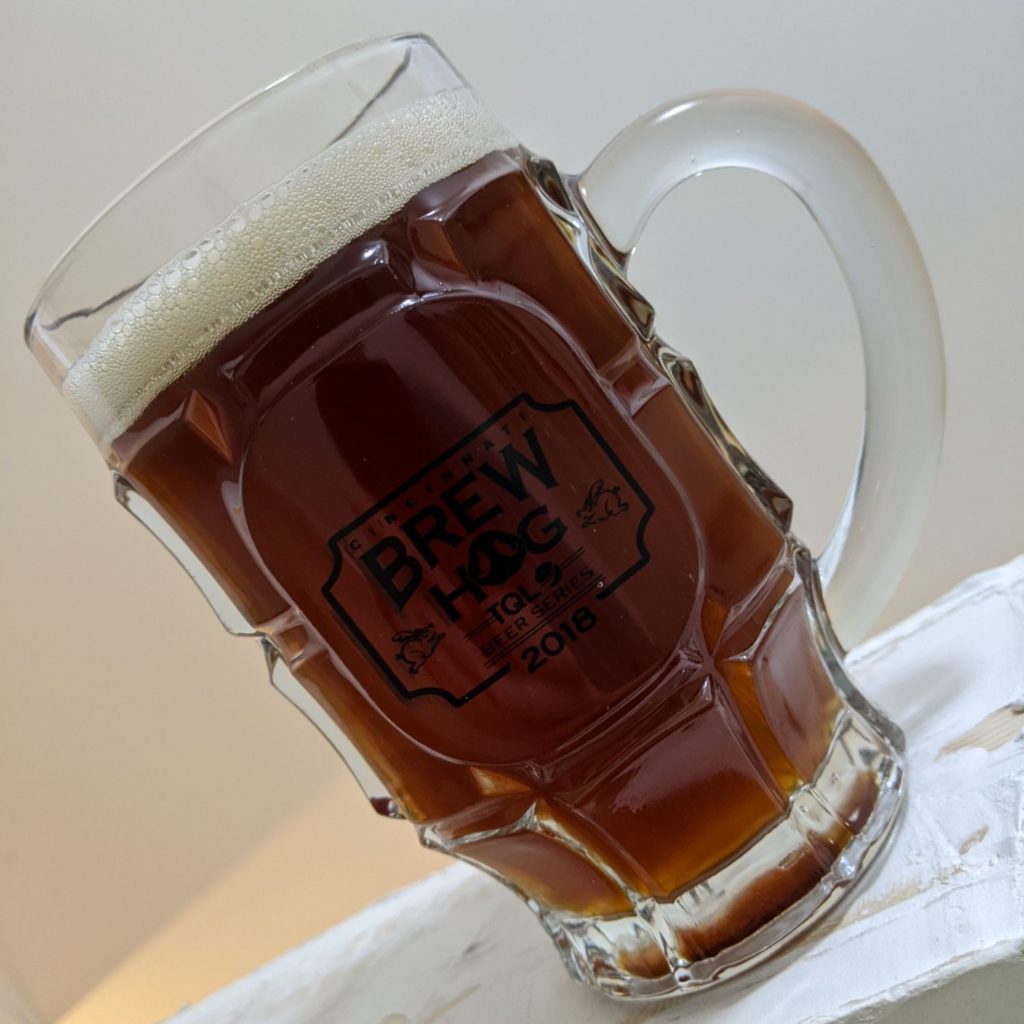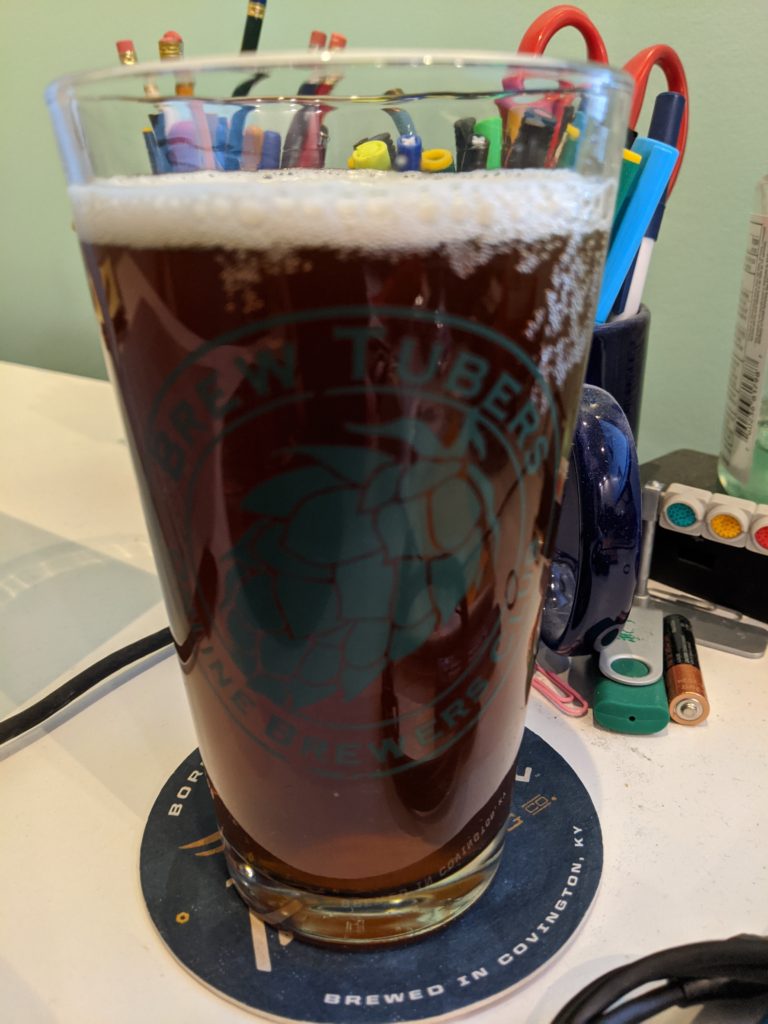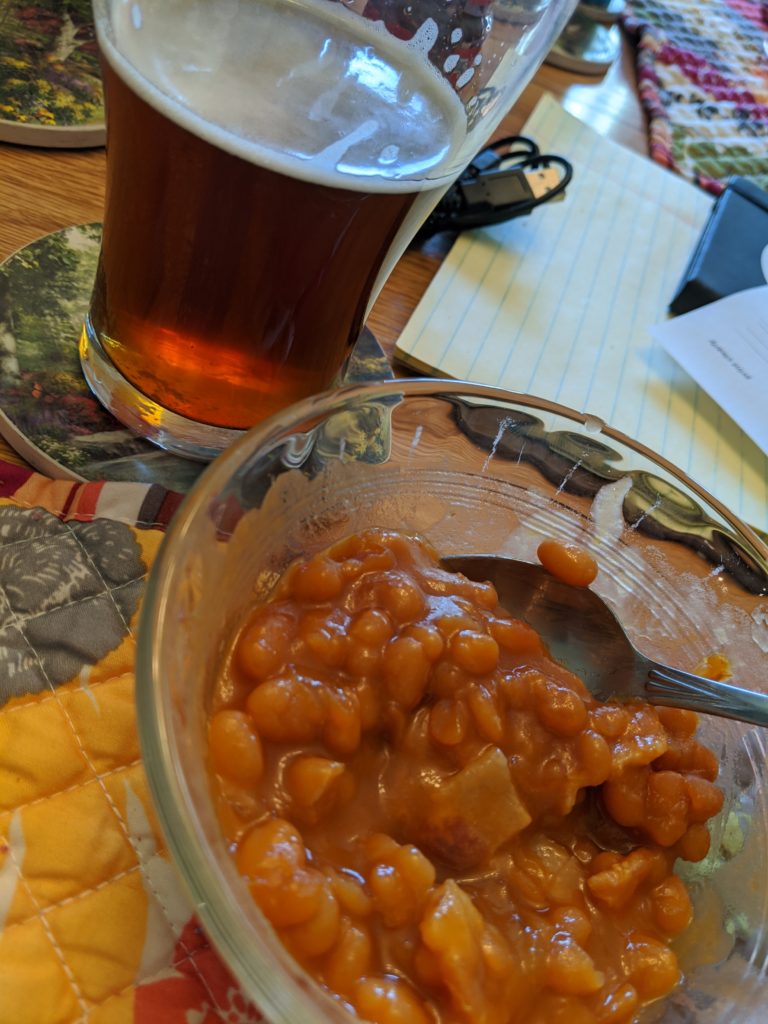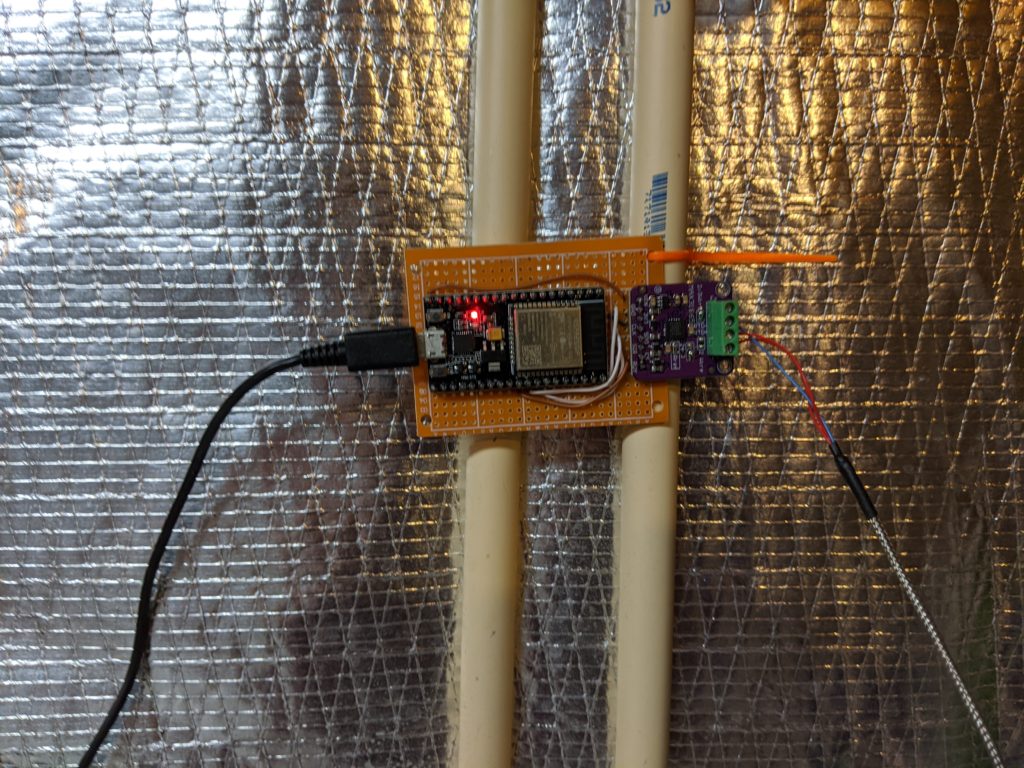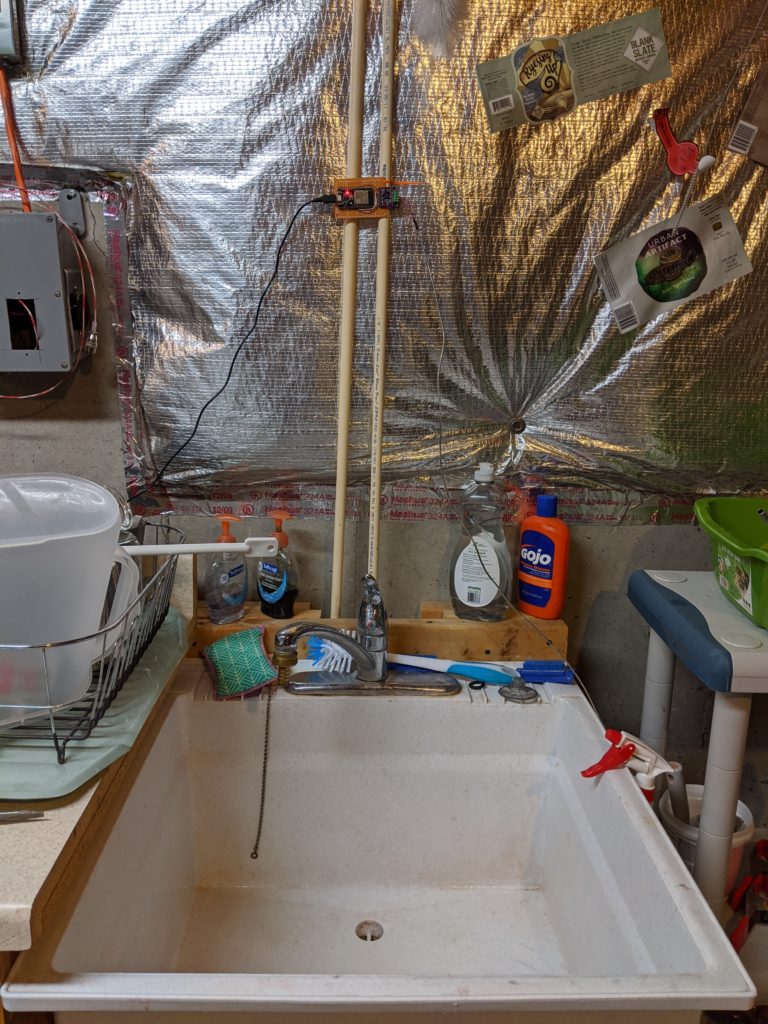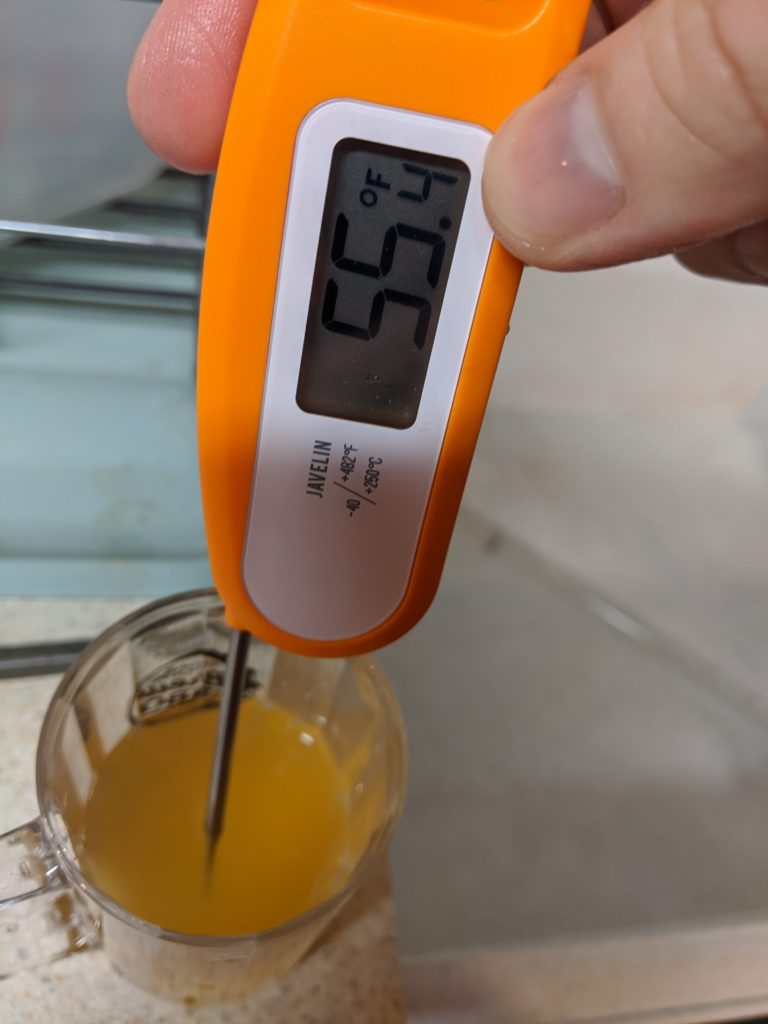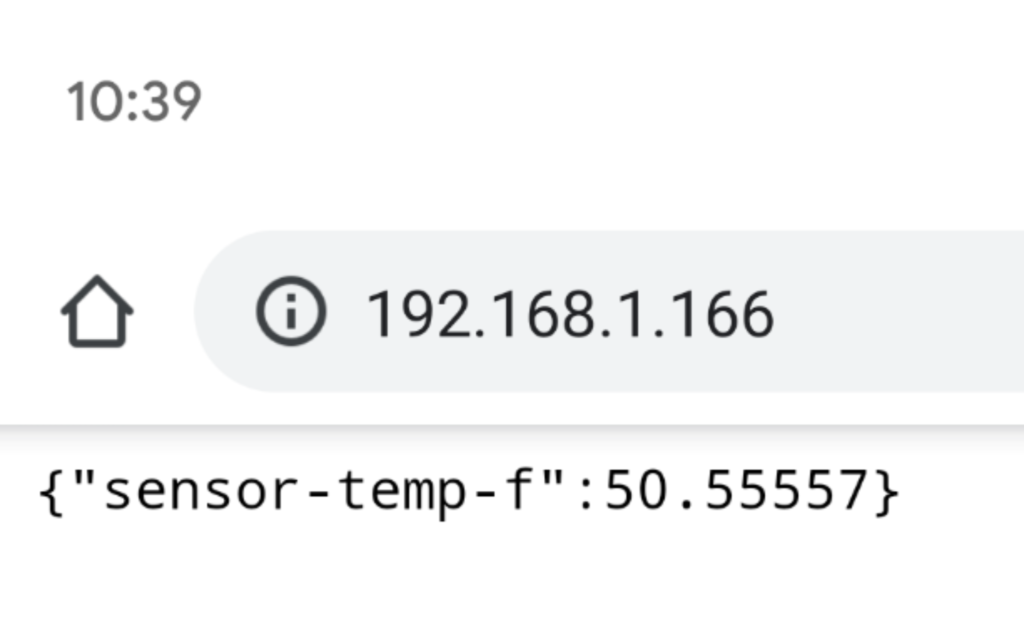Beer
Hopbox Unboxing (May 2022)
There are a few of these on my YouTube channel, and I’m going to try to start posting all the videos here (maybe with a little more text here about the video). Anyway, this is the sixth Hopbox I received from Yakima Valley Hops. These are really fun to get because sometimes there’s as-yet-unnamed hops (like HBC 586), sometimes there’s new hops that my LHBS doesn’t carry (like Sonnet and Talus), there’s ones that I use a lot of (like Citra and Galaxy, and they even sent a can of LupoMAX Citra), and then ones that remind you that some classic hops are great because some classic styles are awesome (I’m looking at that Hallertau Mittelfruh can and thinking German Pilsner or Helles, both wonderful beers). Anyway, enjoy the video!
A Tour of my Brew System
This is a tour of my brew system. My system is cobbled together with parts from eBay, Amazon, Sparkfun, Auber Instruments, and probably Micro Center Mall too. The hot liquor tun is controlled by a PID controlling a solid-state relay that controls the tun’s heating element. The boil kettle controller is similar except instead of a PID I have an Arduino Micro that outputs a pulse width modulation signal (basically on for a period of time, then off for a period of time) to a solid-state relay that controls the boil kettle heating element. The Arduino also reads the rotary encoder and sets the numbers… and yes, it goes up to 11!
A Beer Homebrewer Makes Wine
I decided to make a wine. My wife and I occasionally enjoy a bottle of wine with dinner, and we’ve had times where we’ve run out (a tragedy!) and other times where my wife wanted wine but I did not (a 12 ounce bottle of wine is perfect for these situations!). Enjoy!
NEIPA Brew Day/Recipe
I brewed a New England IPA recently, and while I didn’t take a lot of pictures or video, I referenced the recipe in a video, so it’s here for anyone’s use. This is for 5 gallons into the keg, assuming ~7 gallons into the boil kettle and 5.5 into the fermenter.
Fermentables
10 lb Weyermann Pilsner
1/2 lb Briess Carapils
2 lb Briess Flaked Wheat
2 lb Briess Flaked Oats
Hops
0.25 oz Magnum @ 60 minutes
0.25 oz El Dorado @ 15 minutes
0.25 oz Nelson Sauvin @ 15 minutes
0.25 Hallertau Blanc @ 15 minutes
1.0 oz Eldorado @ whirlpool 20 minutes
1.0 oz Nelson Sauvin @ whirlpool 20 minutes
1.0 oz Citra @ whirlpool 20 minutes
1.0 oz Eldorado @ dry hop 3 days into fermentation
1.0 oz Nelson Sauvin @ dry hop 3 days into fermentation
1.0 oz Citra @ dry hop 3 days into fermentation
Yeast/Other
1 pack Imperial A 38 Juice Yeast
5 tsp LD Carlson Yeast Nutrient
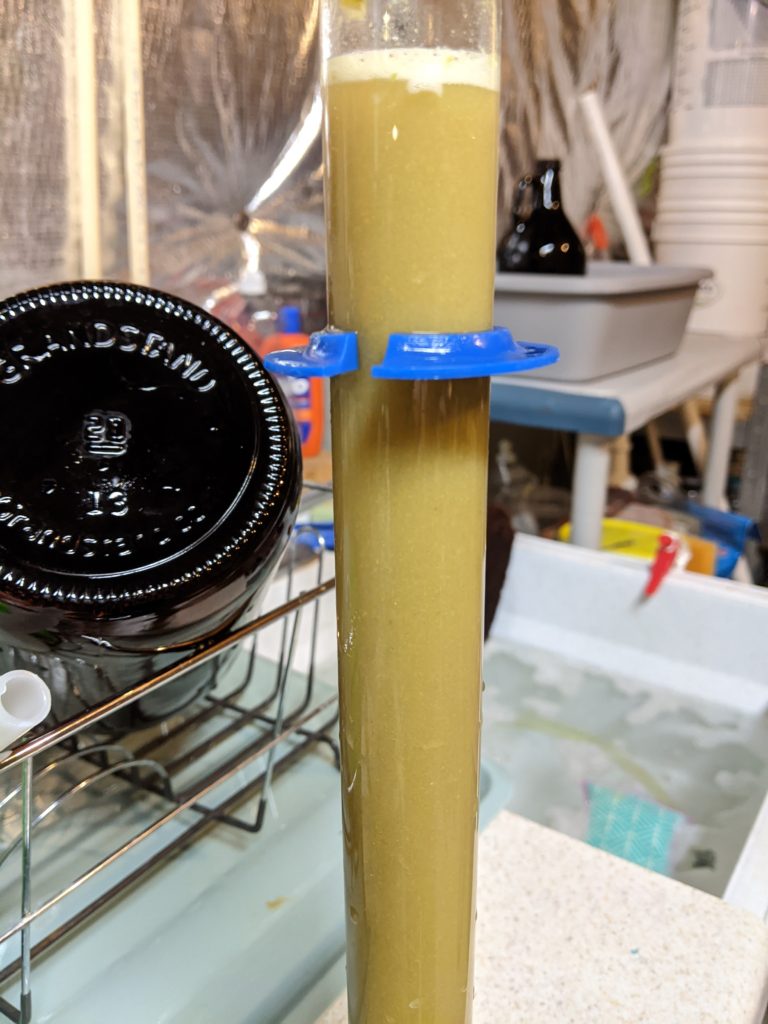
As of the time I’m posting this, the beer is still in the fermenter. It’s been a week. I think it is down to terminal gravity, but I want to do one more gravity check first, and then I’m going to cold crash in the water basin (in other words, add as much ice as I can) before racking it to a keg. 🍻
Homebrew Wednesday July 8, 2020
I’m going to start posting these videos here so my website doesn’t look as dormant as it really is!
This Homebrew Wednesday update talks about the busyness at the end of May and the things that have been keeping me busy – BJCP training, live video streaming research, and some video improvements. I also talk a little about my now-clean keg lines, the pilsner I brewed on Memorial Day, and the upcoming Marzen beer. Cheers!
Brew The Book 2: Northern English Brown Brew Day
For my second brew of the Brew The Book challenge, I brewed a Northern English Brown Ale. I wanted something that was interesting, and I’ve never brewed a brown ale before, so I thought it was a nice start. After reading the descriptions in the book and on the old BJCP guidelines, I decided on the Northern English Brown.
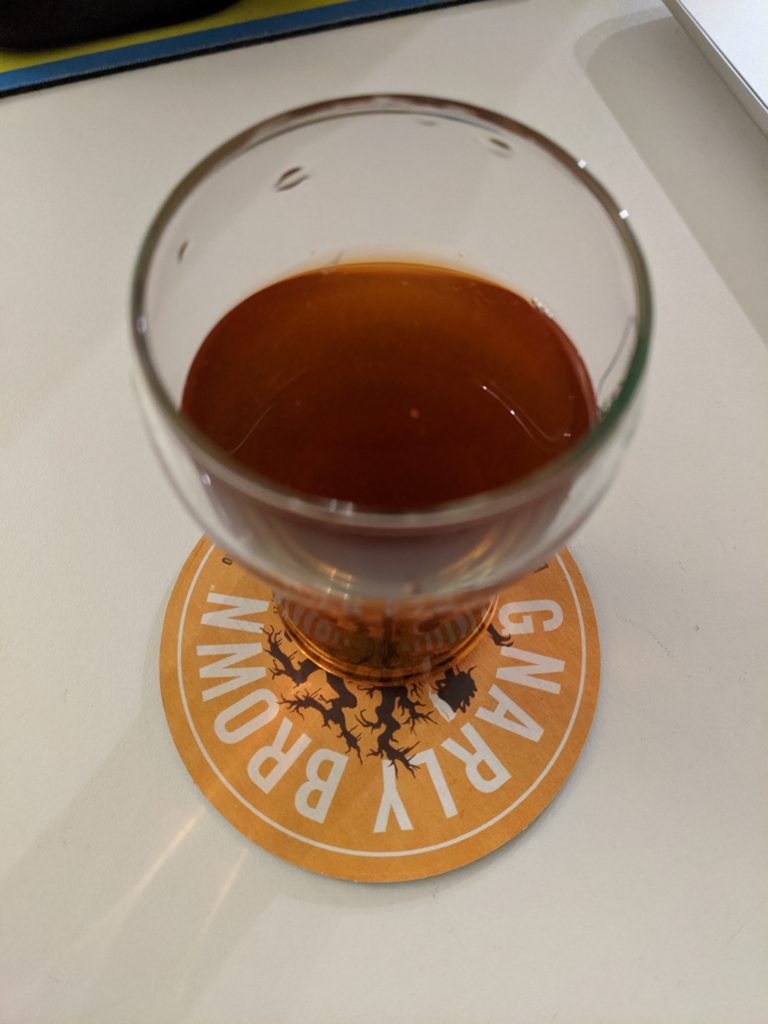
Sidebar: Brown Ales and BJCP Guidelines.
When I started brewing and learned about the BJCP guidelines, the guidelines in use were from 2008 and listed the Northern English Brown and Southern English Brown as separate sub-styles of the English Brown Ale category (along with Mild). American Brown Ale was, of course, separate.
At the time, Southern (11B) is listed as malty-sweet with very low to no hop aroma with low hop bitterness and a ‘low to non-existent’ hop flavor. Northern (11C) has a ‘light but appealing fresh hop aroma’ that may be present, and the flavor has a medium to medium low hop bitterness and an even malt-hop balance.
Fast-forward to the BJCP 2015 Style Guidelines. Dark mild, British Brown Ale, and English Porter are moved around. The British Brown Ale sub-category seems to mostly mimic the old Northern English Brown, and it seems that a Southern English Brown would have to either go into the British Mild or Historical – London Brown Ale.
Recipe Development
Starting with the book’s guidelines, I used the following grain
9 lb Maris Otter
0.5 lb Special Roast
0.5 lb Victory
0.5 lb Caramel 40
0.25 lb Chocolate Malt
Hops were simple, 1.5 East Kent Goldings at 60 minutes and 0.5 EKG at 5 minutes. I used 1/4 tsp of Irish moss at 15, and used Imperial Pub yeast.
Brew Day
Brew day began early since I was also smoking a pork shoulder.
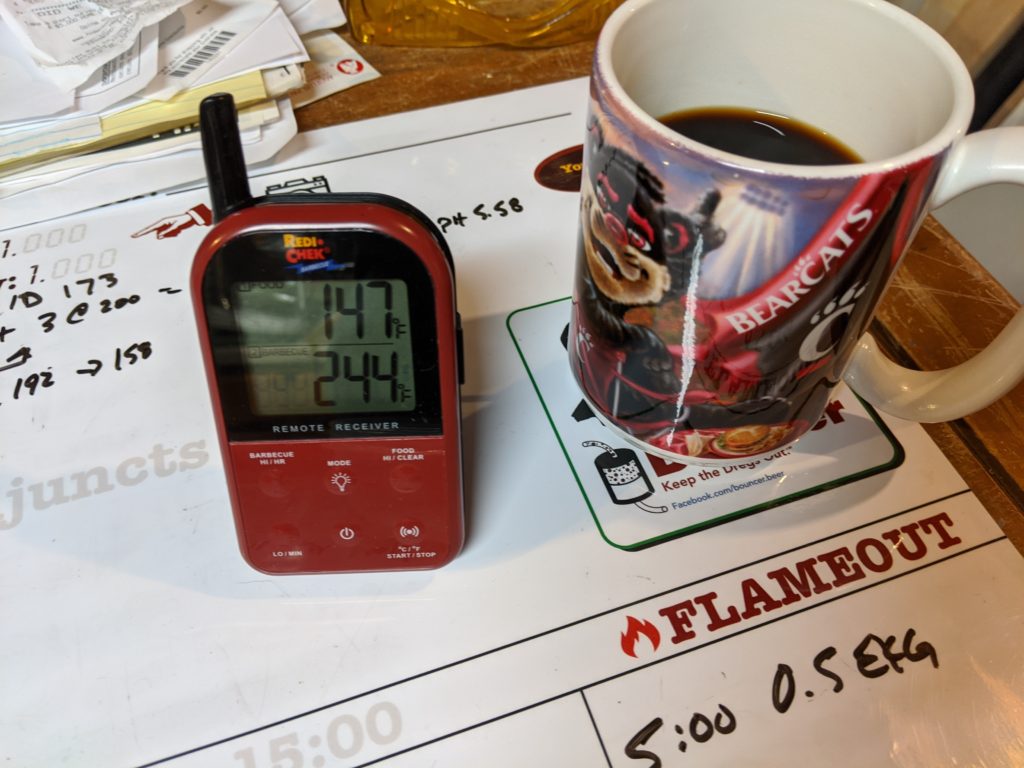
I did have a problem with my mash temp – my initial strike (with 173F strike water) was coming out low and my initial temp was in the 130s. I heated up more water and brought it up to around 149F and started a timer. From then on, there was nothing (fortunately) notable. I didn’t use a hop screen/filter in the boil this time (for the first time in a very long time).
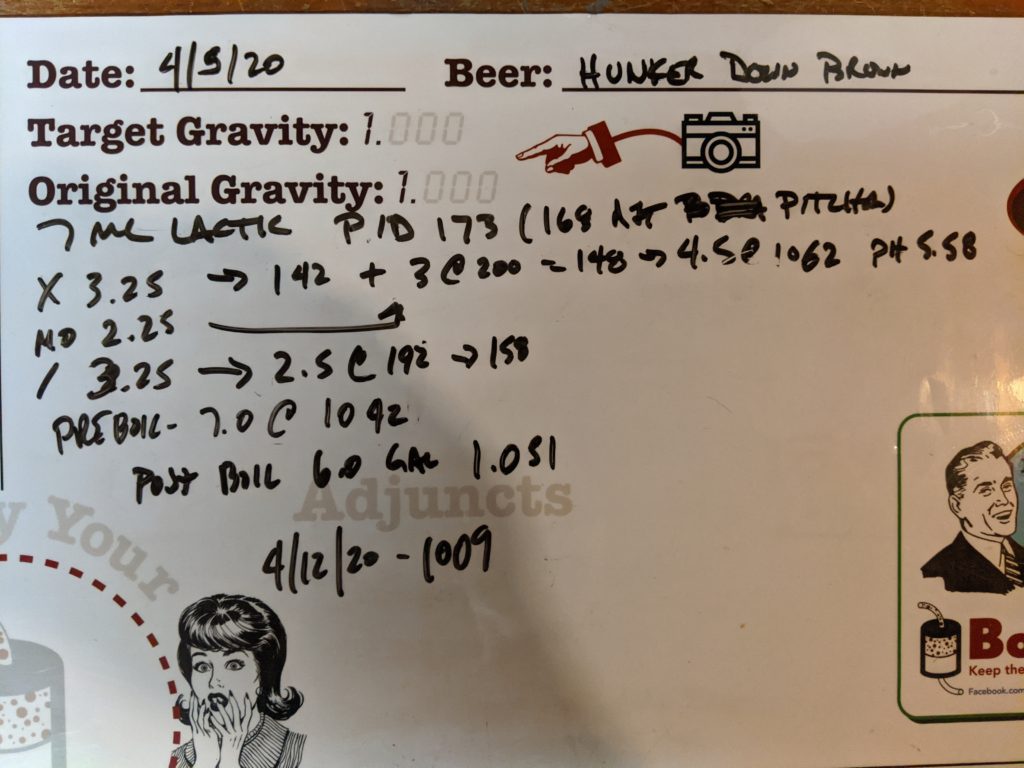
OG: 1.051 (goal 1.052), FG: 1.009 (expected 1.014??? WTF BeerSmith???), 5.5% ABV.
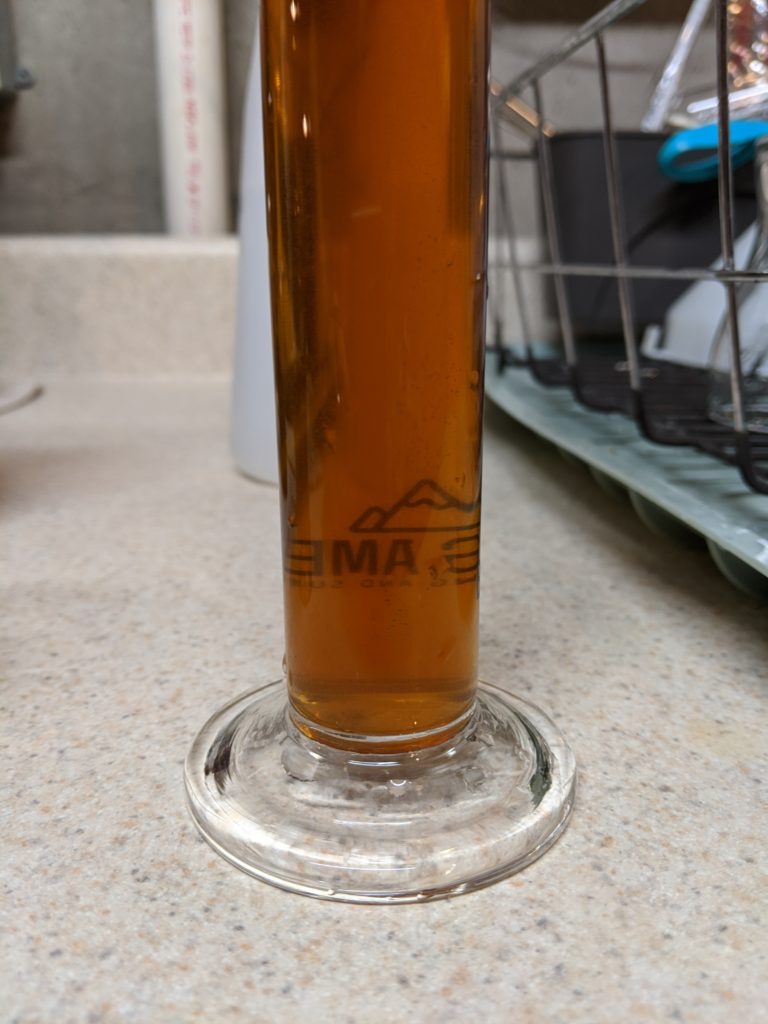
This fermented for a few days, I gave it two weeks and racked it to a keg. It’s a little sweet toasty with caramel and toffee notes. It’s pretty clear (particularly when using no gelatin in the keg). It goes well with my wife’s pork and beans (she uses canned beans but adds onions, mustard, and brown sugar… all by taste).
Cheers!
Brewtubers Yeast Experiment Brew Day
Brewtubers is an online club of homebrewers that use YouTube. I have only a few things on YouTube and have visions of more grandeur than I currently have.
Anyway, at the persuasion of Exit 12 Brewing, I jumped into this thinking “I’ll want to brew an IPA sometime around early February.” I was correct, but I promptly forgot about it in favor of a kveick white IPA. So I was brewing this at the last second.
I selected “Unicorn Dust” – Imperial A20 Citrus / WLP644 Saccromyces “Brux Trois”. According to White Labs, I might see a pellicle, but they’ve done some sequencing and determined that it is a saccromyces variant. It is diastaticus-positive, which is a concern, but it shouldn’t be a major concern since I keg and the bottles won’t be sitting around for too long.
The premise of this experiment is to try to control as many factors as possible – distilled water, specific water additions (thank God I happen to have calcium chloride, I forgot to make sure I did when buying stuff) measuring hops to IBUs instead of ounces, and ensuring the OGs match.
The base recipe is here. I didn’t make any adjustments to the malts – based on my inputting them into my system setup on BeerSmith, they came out to an OG of 1.066. I did make adjustments to the hops – and made the most accurate hop measurements I ever have…
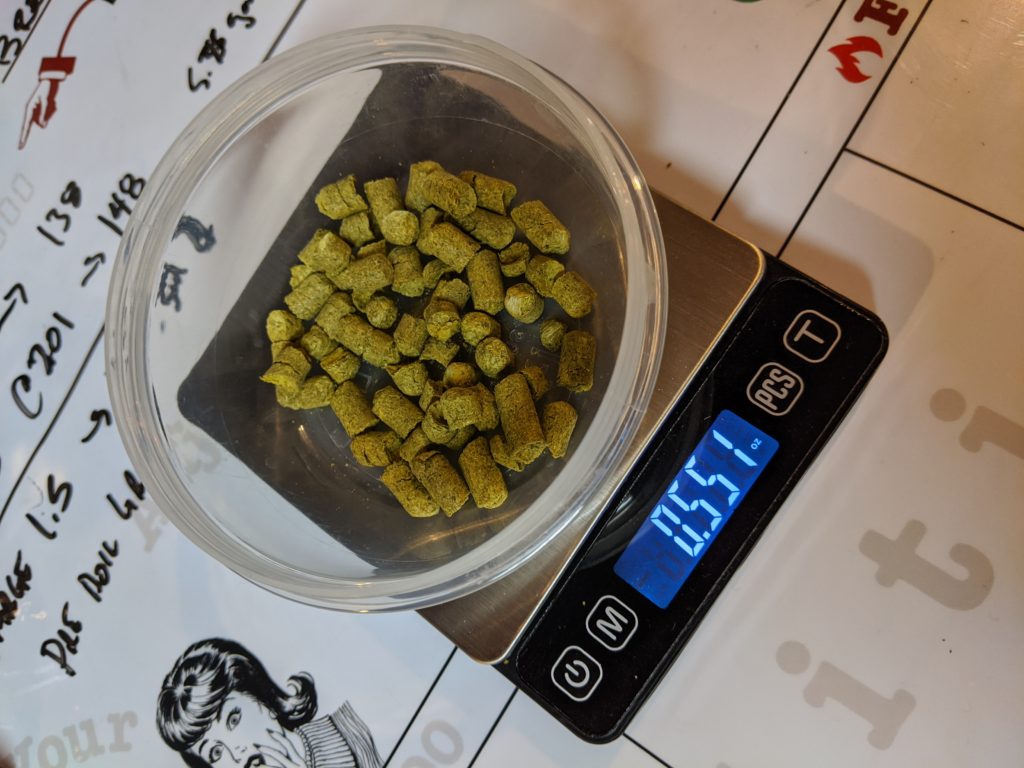
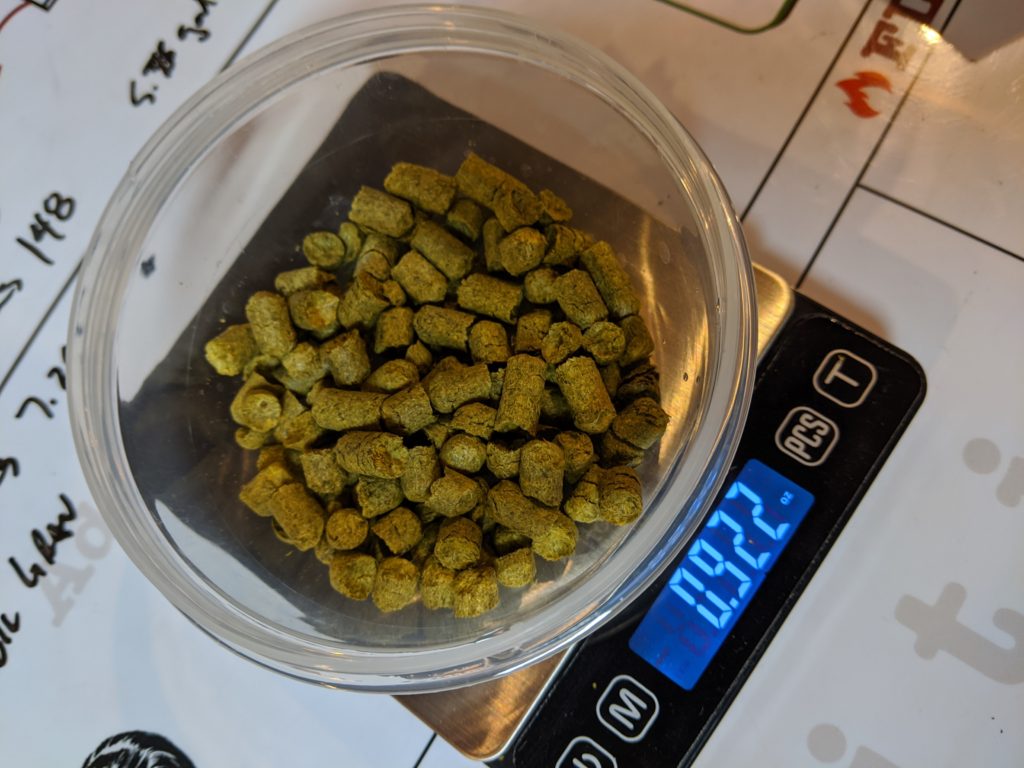
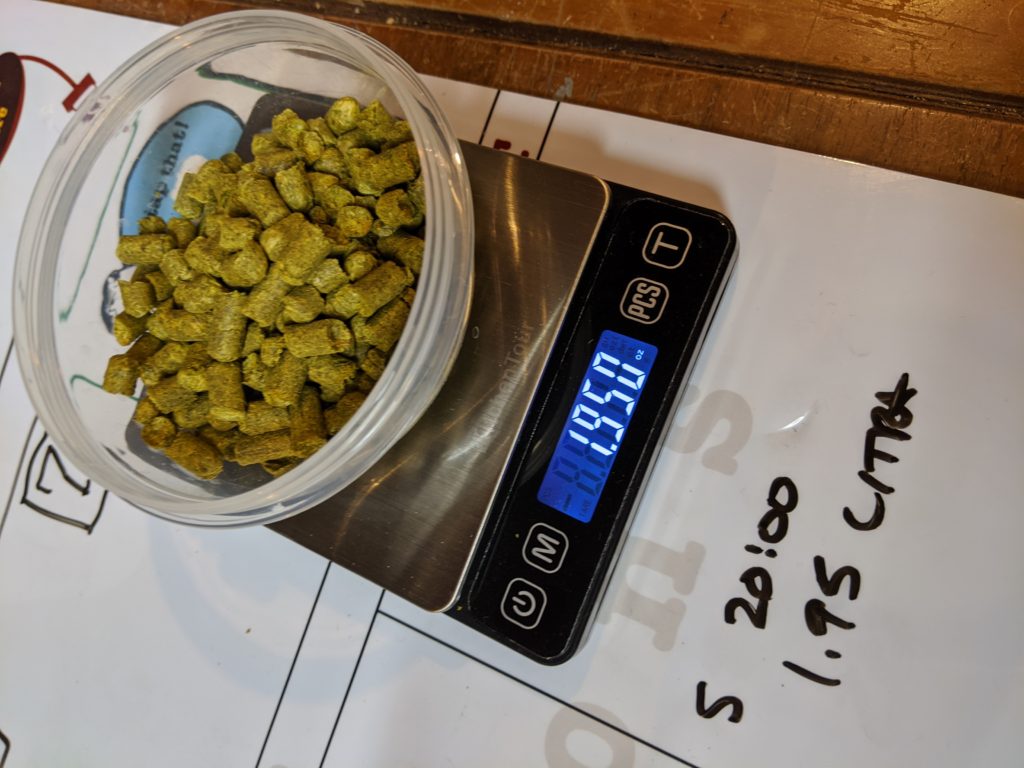
One of the things I was wondering about was the mash pH. I’m used to my water, which goes between pH 75 and 8.5, so I normally use lactic acid. Part of the control of this is using distilled water and 4 grams of gypsum and 5 grams of calcium chloride as the brewing liquor, and a small amount of acid malt. I’ve never used acid malt, so I put the small amount of malt into a separate bag at my LHBS and about halfway through the milling the grain, I dumped it into the mill. The pH didn’t look too bad…
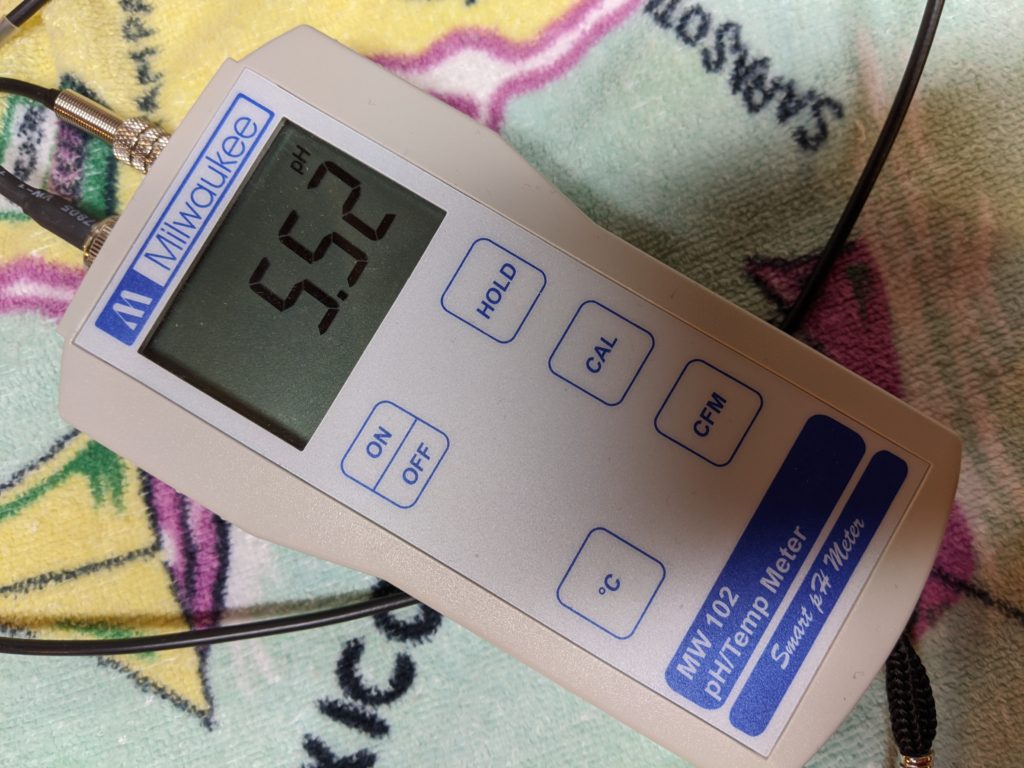
After the 20 minute steep, I went to chill the wort and see if I needed to add some distilled water or malt extract by immediately pulling off some wort to test. I realized it was at 68F, so I immediately transferred the wort to the carboy… which was ultimately 61F. The yeast prefers it to be warmer, 67-80. It did warm to the mid-70s over the next few days of fermentation.
This was kegged using my closed-kegging method, which is shown in the video below.
Evaluation
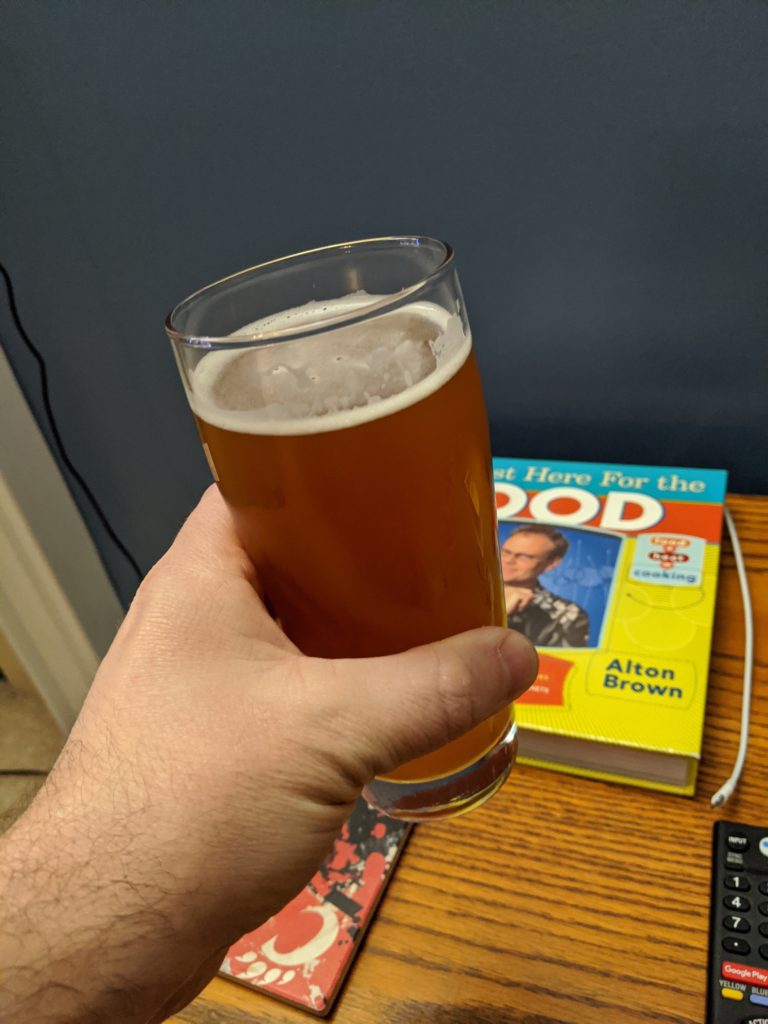
Appearance: Hazy copper color with a fine off-white head. It has cleared a little since being in the keg.
Aroma: Banana and orange flesh. As the keg aged, I noticed some peach coming out.
Taste: Orange flesh, banana, and some peach. Moderately bitter.
Mouthfeel: Medium mouthfeel with light non-lingering bitterness. Medium carbonation appropriate for style. Juicy orange flavors linger.
Overall: This is a tasty and juicy beer, although the bitterness is very low for the style (it should be west coast IPA).
Cheers!
Brew The Book 1: German Pilsner Brew Day
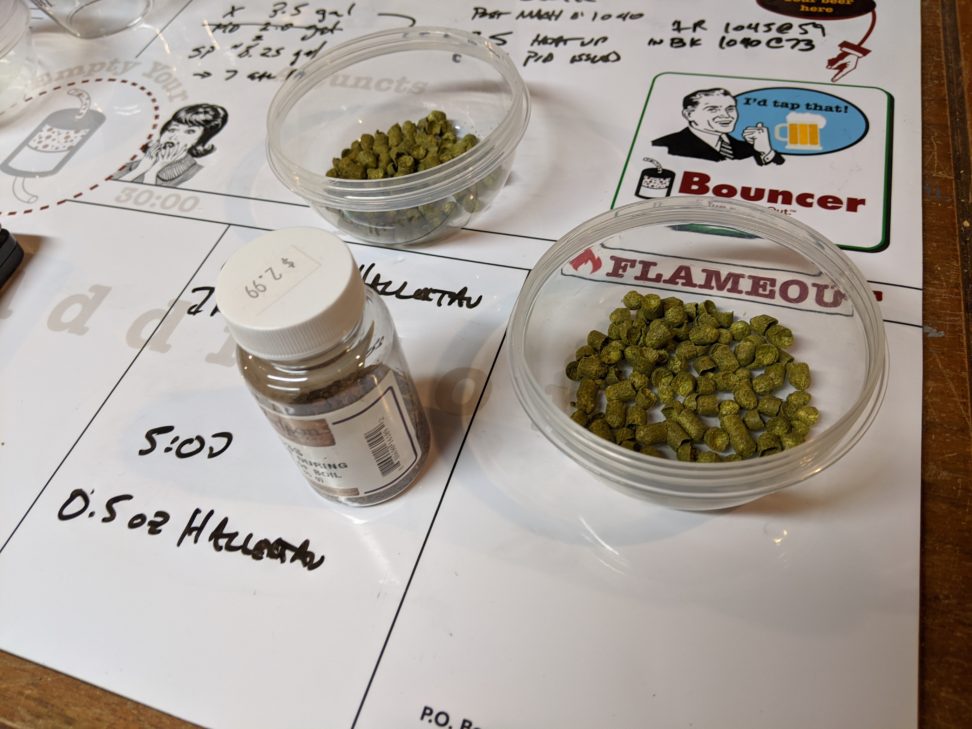
The first of the four from the Brew The Book series is a German Pilsner. I tried to make as few changes from the book as I could, but keeping within what a German Pilsner should be – a light, dry beer with crackery malt, floral hop aroma and flavor, and a bitter finish and aftertaste. It shouldn’t be strong (the style guidelines call for a 4.4% – 5.2% ABV beer with an OG of 1.048 – 1.056 and an FG of 1.010 – 1.015.
The book calls for 10.8 pounds of malt – I used 10 pounds of German Pilsner malt since my system would have yielded a significantly higher OG than the recipe calls for and also require more hop adjustments. I used Horizon hops for bittering instead of Perle, and adjusted to the same IBUs as the original recipe (~28 IBU). The final change was using two rehydrated packets of Saflager W34/70, which is supposedly the same yeast as the other recommended yeasts – WY2124/Bohemian Lager and WLP830/German Lager (the book recommends Saflager S-23 is the same as WY2206/Bavarian Lager and WLP820/Oktoberfest Lager).
During the brewday I mostly hit my numbers. The pre-boil and post-boil numbers seemed off until I double-checked and they were just about right on (my OG ended at 1.048, the expected was 1.049. This was nice since my mash was a little on the cool side (146F or so) and after I initially added a gallon that was supposed to be at 190 and saw no change, I realized there’s something wrong with my PID controller connection.
Everything else on the wort production side went as planned – in fact, the only things that generated a 🤬 or 🤬🤬 involved water (I spilled some while lautering).
One of my concerns after my last lager is getting a fruity mess – that lager still has some fruitiness that is likely some yeast esters. So I wanted to keep the fermentation cool. And after having some success cooling that lager down (and heating up my last IPA, which used Kveik yeast). To go one step further, I decided to install a monitoring probe. I started with a pt100 temperature sensor in the bottom of a scrap piece of PVC pipe. I then connected that to an ESP32 device running Micro Python and set it up with a way to see the temperature from anywhere on my home’s network.
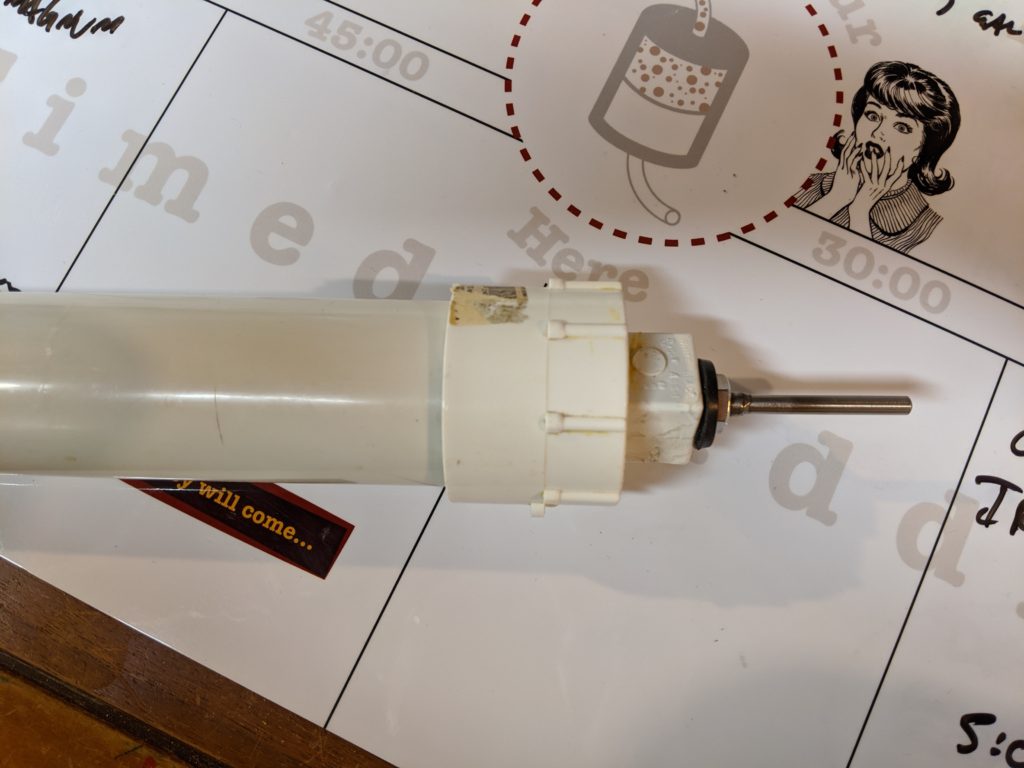
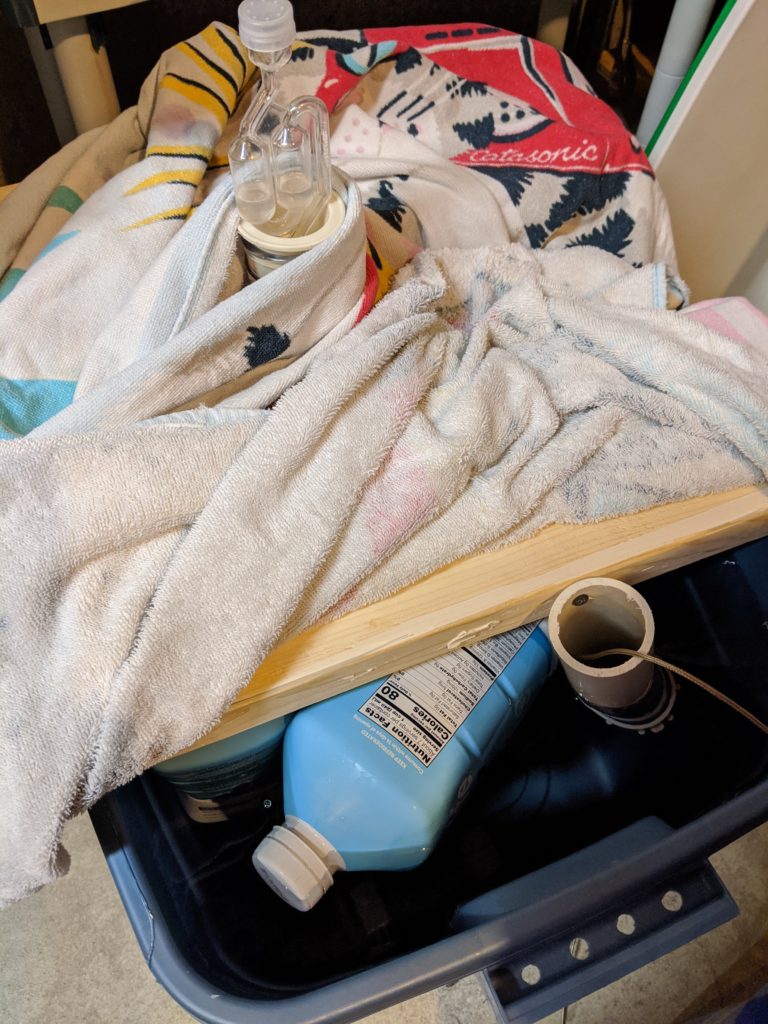
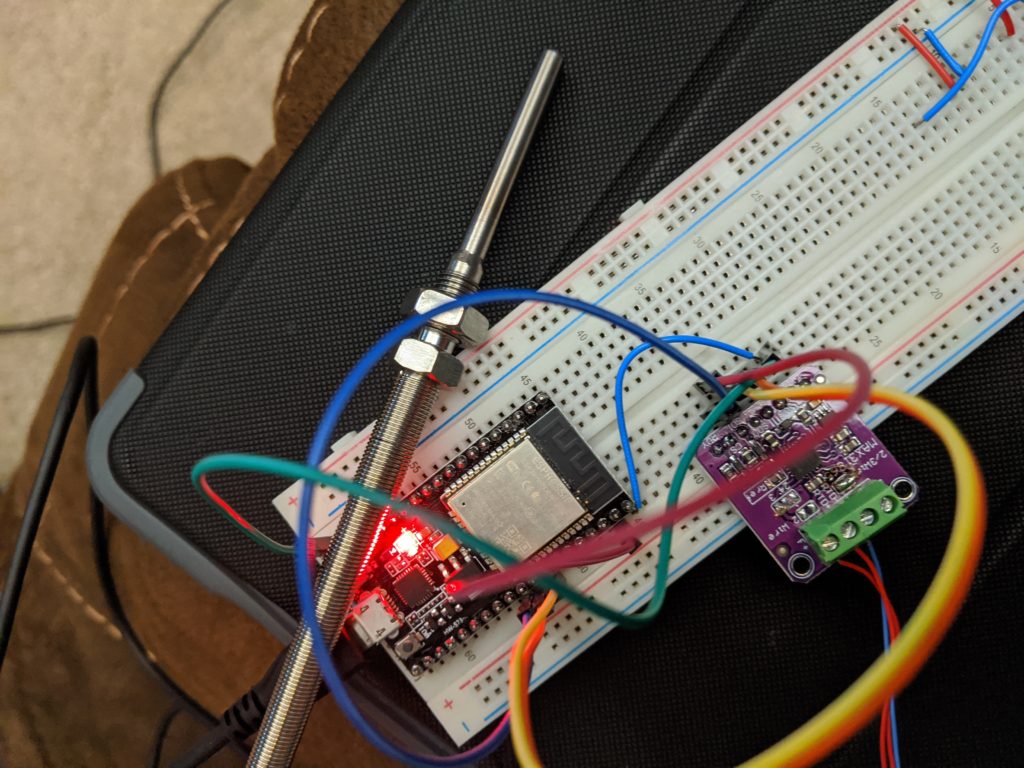
It looks better when I have it soldered up and in place… but not that good when zip-tied to a water pipe to keep it out of the way. I’ll fix that someday.
One of my concerns was how the water bath temp and fermenter temp interacted. Curiosity got me, so during the height of the fermentation, I pulled a sample from somewhere around the middle of the fermenter and compared it with the water bath…
The gallery above shows the temperature in the fermenter at 55.4F, and the water bath at 50.6 (which reads a degree high compared to the Javelin at the top of the water bath, but it may not be entirely homogeneous). The fermentation range (per Fermentis) is 54-59F, so 55 isn’t a problem, and it did start that low, so I’m hoping this means far fewer esters. 🍻
Stay tuned for the next episode!
Brew The Book: Series Intro
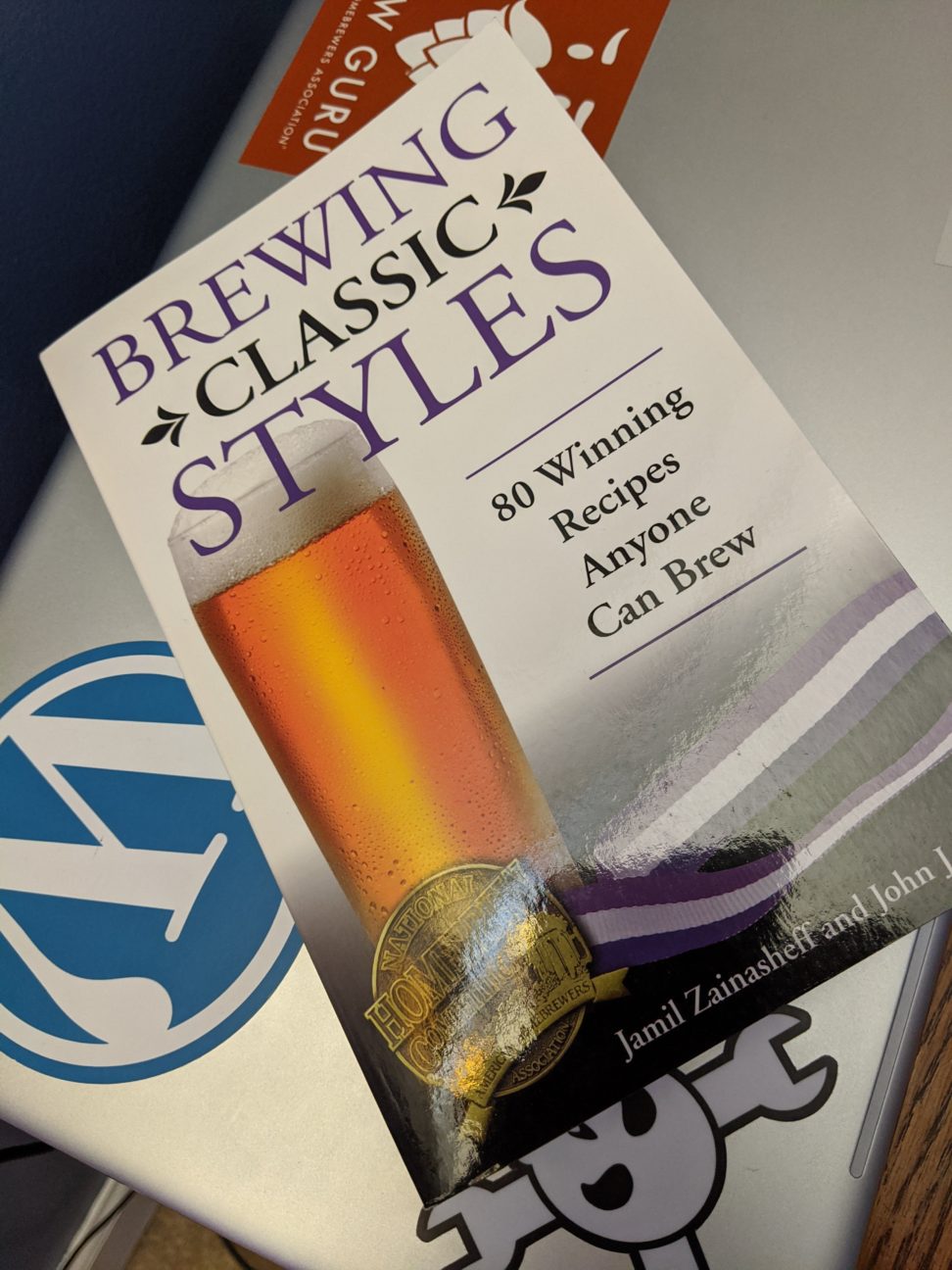
This started with a thread on Reddit. I decided to join in when I decided I wanted to make a lager and selected the German Pilsner “Myburger” from Brewing Classic Styles.
The premise of “Brew The Book” is pretty loose. There’s no set number of brews, it’s not expected to do something like restrict your all your brewing to one book for a year. I decided I’m going to brew four from the book, roughly quarterly.
The first for me is the German Pilsner. Maybe it’s all the #crispyboi and clear lager posts I see on Reddit’s r/TheBrewery, maybe it’s because I have more appreciation for some of the classic styles, but that’s what I want.
The second is going to be the Northern English Brown Ale. I was really torn between these two and a few other British styles and after reading the descriptions I decided on the Northern English Brown because it’s not quite as malty and sweet.
For the remaining two, I’m thinking the Marzen, and a hefeweisen or dunkelweisen. I expect that I’ll be brewing the Marzen in early summer to be ready for the traditional Oktoberfest timing of Late August to Early September. If I do the hefeweisen, it might be in March; dunkelweisen might be later in the year to be ready in November.
I’ll update this post as I go.
Beergun!
I’m in a predicament… I have a keg of wine barrel aged saison that is very nice, but also not a ‘daily drinker’. I also have to prepare some bottles for the SJ Poor Challenge. So I broke down and bought a Blichmann Beergun v2.
For starters, it comes in a nice box with most of the stuff you need. I had to make some modifications because I use pin-lock kegs, but the modifications were easy enough. Blichmann recommends cleaning prior to the first use, and not only is it a smart thing, it looks like there may have been some machine oil residue in the beer tube of mine…
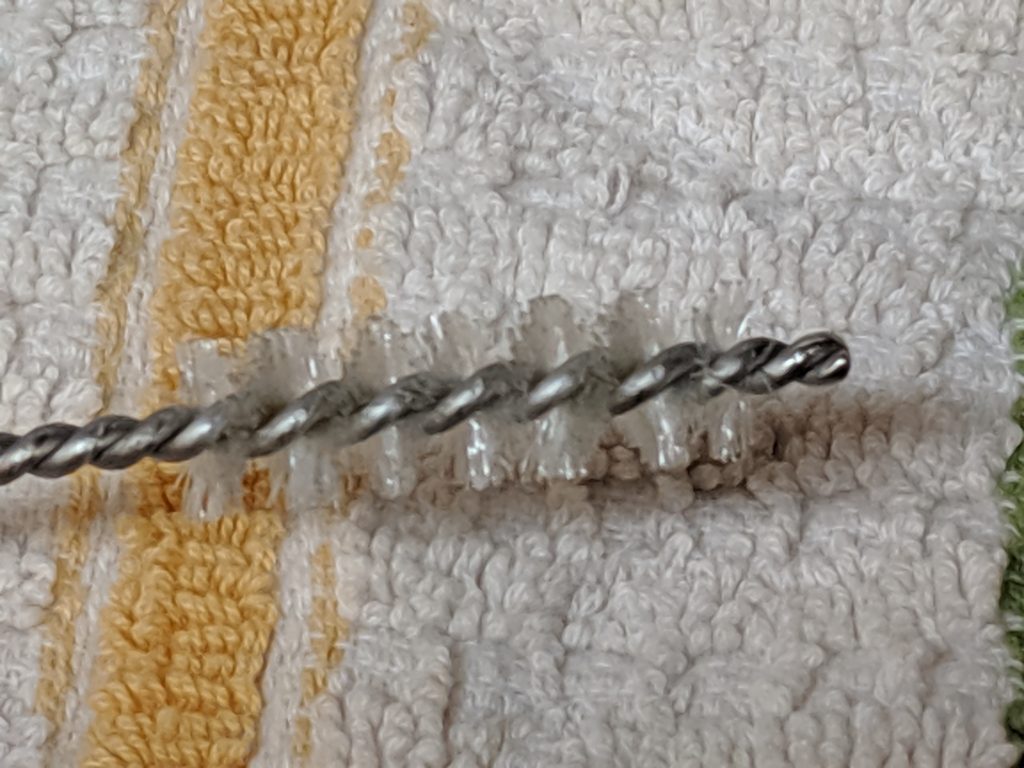
This was the brush after using it to clean and re-clean the CO2 tube. 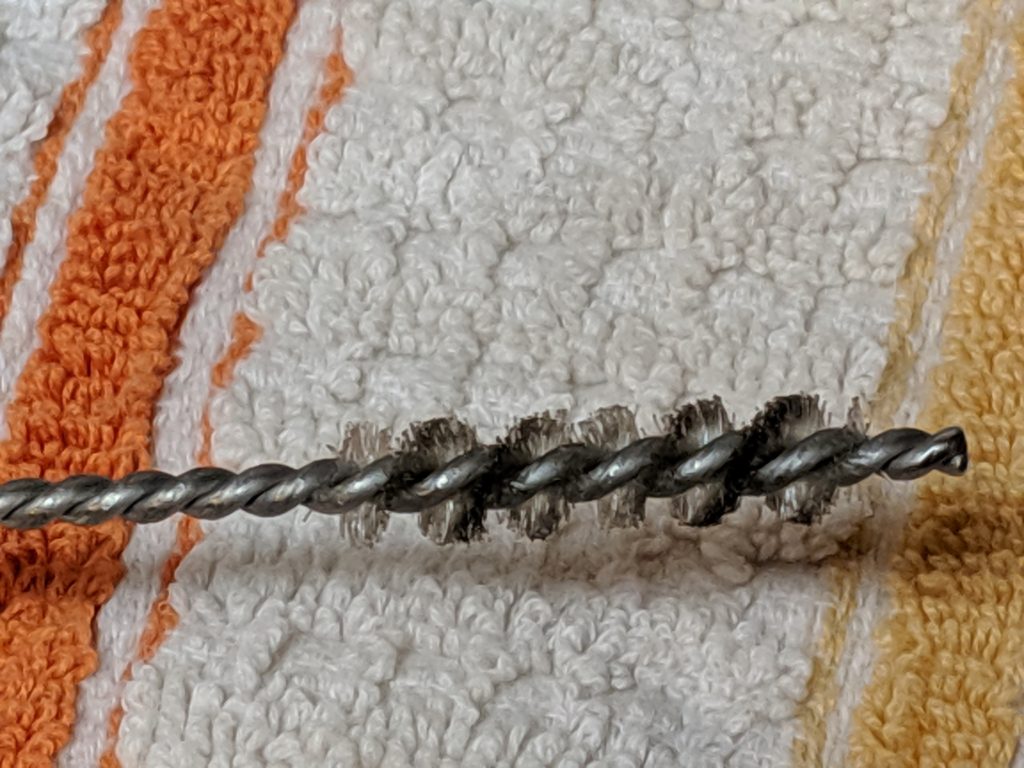
This was the brush after using it to clean and re-clean the beer tube. The dark oily stuff was from the first cleaning.
The Setup
Prior to actually using my Beergun, I looked on YouTube at a few videos. One video showed a nice setup and I took an idea from the author – I used a pitcher full of Star San to hold the Beergun between filling. The other (which I’m not going to link to) showed how important organization is when doing something like this.
My initial setup was less than ideal, but it was semi-functional, and temporary. My table was a piece of plywood on a stool (not the greatest), and that presented some difficulties (if I were to push down at the wrong spot, the whole setup could end up on the floor). The second time I did this (sorry, no picture), I used some sawhorses (definitely more stable) and an old tray to keep the spillage contained.
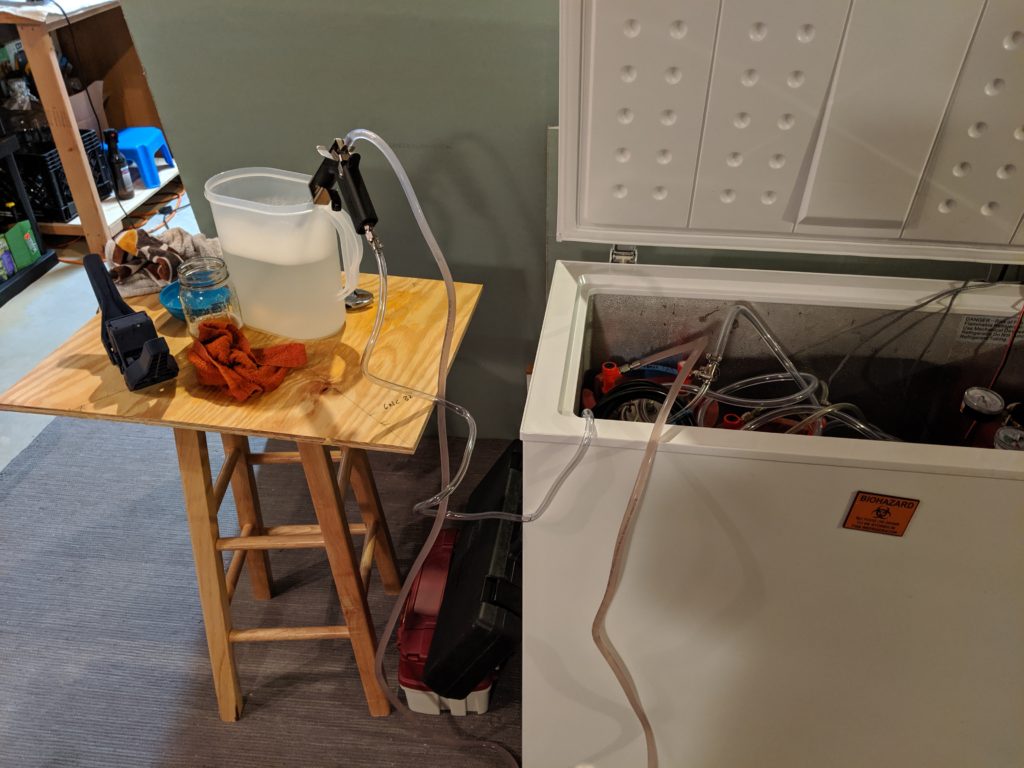
In the image above, I have the beer CO2 line go from my second manifold to a T connection that goes to both the keg and the beer gun (see the diagram below).
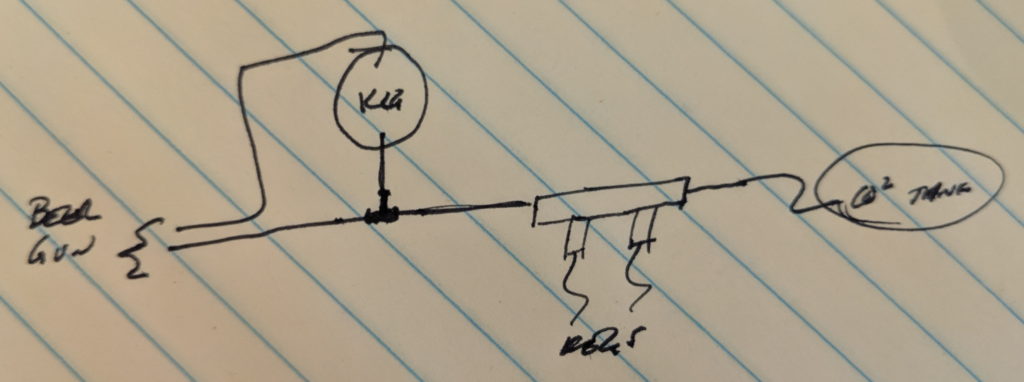
My process went largely the same as in the video I linked to, just a bit more rough. Fortunately, nothing ended up on the floor, and I bottled 12 bottles with only one with a low-fill (I need to send 10, so the extra two will stay at home including that low-fill bottle).
A few weeks later, I bottled that keg of red wine barrel aged saison, and with the exception of one low-fill, it went well.
